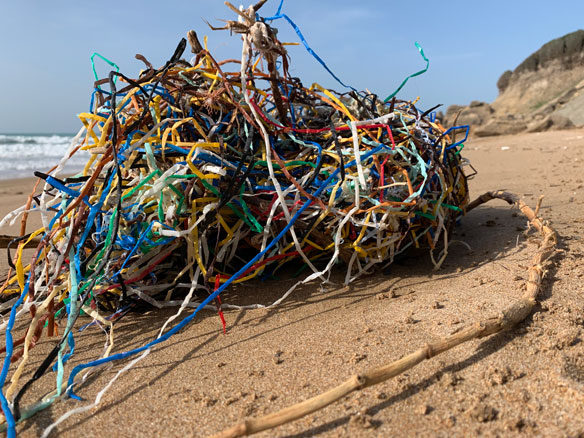
“The unprecedented plastic waste tide plaguing our oceans and shores, can become as limited as our chosen relationship with plastics, which involves a dramatic behavioral change on our part…”
Captions and Photo: © SAF — Coastal Care
Excerpts;
We have all become more aware of the environmental impact of our clothing choices. The fashion industry has seen a rise in “green”, “eco” and “sustainable” clothing. This includes an increase in the use of natural fibres, such as wool, hemp, and cotton, as synthetic fabrics, like polyester, acrylic and nylon, have been vilified by some.
However, the push to go “natural” obscures a more complex picture.
Natural fibres in fashion garments are products of multiple transformation processes, most of which are reliant on intensive manufacturing as well as advanced chemical manipulation…
To promote different fibre use without fully understanding its environmental ramifications suggests a disingenuous engagement with environmental action. It incites “superficial green” purchasing that exploits a culture of plastic anxiety. Their message is clear: buy differently, buy “better”, but don’t stop buying. Yet the “better” and “alternative” fashion products are not without complex social and environmental injustices…
Read Full Article; The Conversation (06-02-2020)
The world is paying a high price for cheap clothes; CNN (05-03-2020)
Bangladesh Pollution, Told in Colors and Smells; The New York Times (07-21-2013)
Bangladesh’s garment and textile industries have contributed heavily to what experts describe as a water pollution disaster. Environmental damage usually trails rapid industrialization in developing countries, and Bangladesh is already one of the world’s most environmentally fragile places, densely populated yet braided by river systems, with a labyrinth of low-lying wetlands leading to the Bay of Bengal…
Toxic Threads: Polluting Paradise A story of big brands and water pollution in Indonesia, by Greenpeace (04-28-2013)
Greenpeace International investigations have revealed the dumping of industrial wastewater containing a cocktail of toxic and hazardous chemicals, and caustic water, directly into the Citarum River, West Java. International fashion brands are linked to this pollution…
Dirty Laundry: Greenpeace Reports on Toxic Industrial Water Pollution, by Greenpeace (08-26-2011)
A report released by Greenpeace International, after a year-long study research into industrial water pollution, reveals the presence of hazardous chemicals in clothing items bearing the logos of 14 global popular brands, linking many of the same clothing brands to suppliers in China who were found to be releasing daily cocktail of chemicals into the Pearl River and Yangtze River deltas, discharging into the China Sea…
How plastic waste moves in the environment; Science Daily (11-27-2018)
A researcher for the first time has modeled how microplastic fibers move through the environment…
Sea anemones are ingesting plastic microfibers; Science Daily (03-28-2019)
Video captures moment plastic enters food chain, BBC News (03-11-2017)
A scientist has filmed the moment plastic microfibre is ingested by plankton, illustrating how the material is affecting life beneath the waves. The footage shows one way that plastic waste could be entering the marine and global food chain…
Plastic Pollution: When The Mermaids Cry, The Great Plastic Tide, Coastal Care
Washed out on our coasts in obvious and clearly visible form, the plastic pollution spectacle blatantly unveiling on our beaches is only the prelude of the greater story that unfolded further away in the world’s oceans, yet mostly originating from where we stand: the land…









